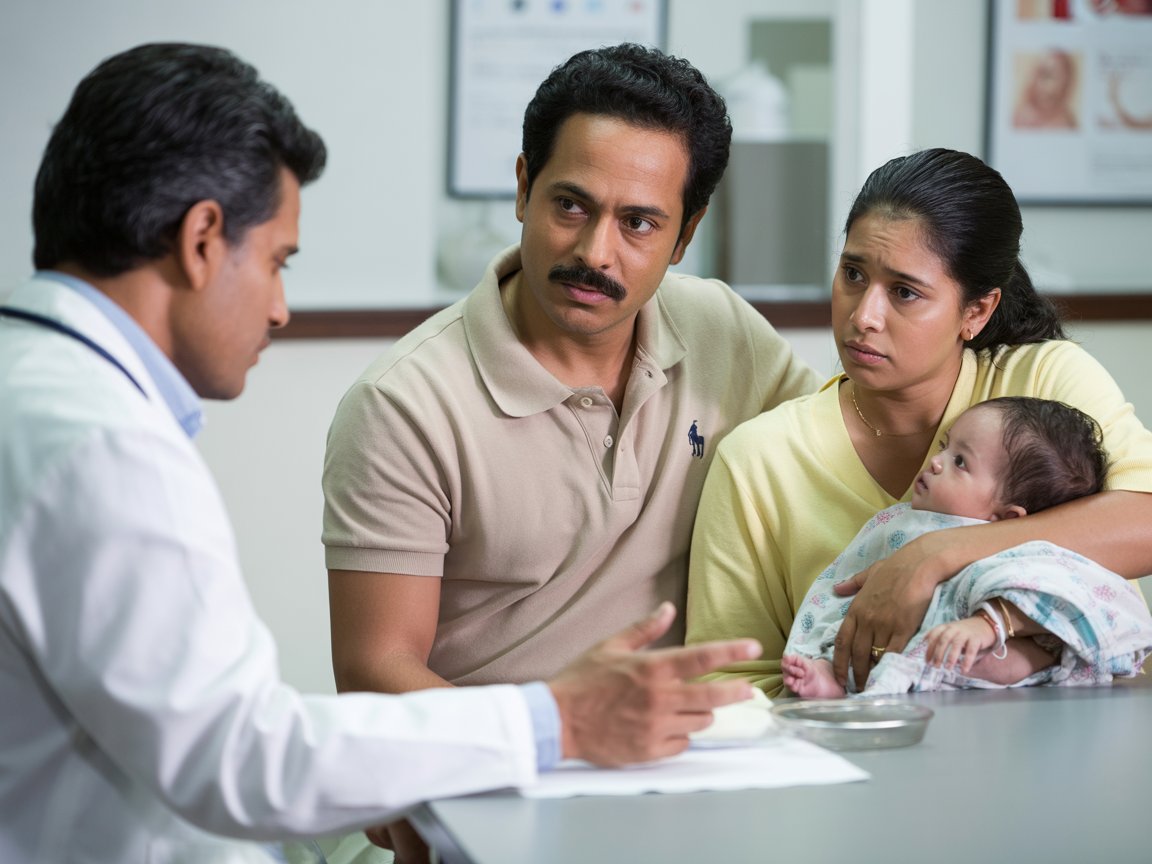At three months of age, most babies kick their legs excitedly, grasp at fingers, and turn their heads toward voices. But this little boy did none of that.
He lay quietly in his mother’s arms. No limb movements, no resistance, but with a smile. His parents thought he was naturally calm. But a pediatric neurologist thought otherwise.
When they walked into our clinic in Genetics, they looked composed. Calm, even. But behind that calm, I could sense anxiety, the kind that builds up when parents already suspect something’s wrong but haven’t heard it said aloud yet. The father was working in the private sector. The mother, a schoolteacher. This was their first child. The pediatric neurology fellow had already spoken to them gently, hinted at a diagnosis called spinal muscular atrophy (SMA), and mentioned the possibility of treatment, though nothing definite. They came to us for genetic counselling and genetic testing.
I explained what SMA is, a genetic condition caused by the loss of the SMN1 gene, which leads to progressive loss of motor neurons. The most severe form, SMA Type 1, presents in early infancy with hypotonia, weakness, feeding difficulties, and respiratory distress. I recommended MLPA testing to look for deletion of exon 7 in the SMN1 gene, and to assess SMN2 copy number, which influences severity and helps guide therapy. They nodded, listening carefully. The weight of the unknown was already upon them.
A few weeks later, they returned with the report. The diagnosis was confirmed: homozygous deletion of exon 7 of SMN1. Their baby had SMA Type 1.
I sat with them again. This time, there was no ambiguity. I drew the autosomal recessive inheritance pattern on paper and explained how both parents had unknowingly passed on a faulty gene. I referred them back to the pediatric neurology team, who discussed treatment options and took their details. There is, after all, a therapy. Zolgensma, a gene therapy that can drastically alter the course of SMA if given early. But it costs around ₹18 crores.
In India, some children receive this therapy for free through a lottery system sponsored by the pharmaceutical company. The baby needed luck. A random selection among applicants from across India. Some get the call that changes their life. Others don’t. And hope, for them, slips away despite a diagnosis and a documented cure.
A few days later, the parents returned. This time, they didn’t carry reports. They carried helplessness. How do we collect ₹18 crores? What if we don’t get selected? Is there any other way? I had no answers.
I told them about families I’d seen in my home state, those who had tried crowdfunding, some successfully. The power of strangers uniting through social media. But I also told them what I didn’t want to say out loud: that even with help, most campaigns don’t make it. The cost is just too high. Too many people are trying. Too few are making it.
They didn’t cry. They just sat quietly, their baby asleep in their arms. And I listened, knowing that for now, that’s all I could do.
A few months later, the baby was admitted again. Pneumonia. A common complication in SMA, but a dangerous one. I saw the father again in the hospital corridor. He looked exhausted. Not just physically, but emotionally worn down, like someone surviving on the fumes of duty alone. He told me that his wife couldn’t get leave from her school job. He had to quit his private job to care for their child. I had nothing to say. No new therapy. No new contact. No new hope. Just silence.
I am not someone who gets emotional easily. I’m often that angry doctor, the one who doesn’t communicate well when he’s rushing between wards and reports. The one who answers in half-sentences if he’s pressed for time. But I also know that when I do have the time, I give it fully, patiently, and completely. That day, standing in that corridor, I didn’t need to speak much. The father wasn’t asking for anything, just letting it out. And I was simply there, not as a geneticist, but as another human being. I was watching a family break apart, knowing there was nothing left to offer.
A few days later, the child died. There was no drama, no last-minute miracle, no announcement. Just a soft message from the neurology team: the baby had passed away. This was no longer about diagnosis. It was about everything that comes after it, and how little control we sometimes have, even when we know the science.
Weeks later, the father came to see me again. This time, there was no fear, just a cautious, tentative hope. They were planning for another pregnancy.
We sat down and talked. I explained that in the next pregnancy, we could do chorionic villus sampling (CVS) at around 11–13 weeks. We could test the fetus by MLPA, and if affected, we’d know early. This time, we had the power to intervene. I also told him to do thalassemia carrier screening, something routine in India, but so often missed. I didn’t want one tragedy to lead into another preventable one.
He listened, and at the end of the conversation, he said he felt okay. Before he left, I told him with a smile, “This time, we’ll prevent it. We can stop it before it begins.” I also added, “I’ll be passing out of this institute in about 8 months. But if your wife becomes pregnant again, please let me know. I’ll coordinate the prenatal testing myself.”
Because sometimes, the best thing we can offer isn’t a cure, but a promise. That next time, things can be different.
This isn’t just the story of one child or one disease. This is the story of many rare diseases, where treatments exist, but are priced so high that they’re practically out of reach. The companies that develop these therapies spend millions in research and development, often over decades. The number of patients is small. The cost, by business standards, must be high. This is the economic paradox of rare diseases: treatments are real, but access is unreal.
And so we, as doctors, sit in the space between science and sorrow. Between what can be done and what will never be done for most. We explain, we draw inheritance patterns, we recommend prenatal options. But we also carry stories like this one, not because we failed, but because the system never gave this child a chance.
Let this story push us toward policies that include newborn screening for SMA in India. Toward public funding and realistic pricing for gene therapy. Toward a healthcare system where a diagnosis leads to a plan, not a prayer. Some stories don’t end well. But they leave behind a message. Let this one become a reason we do better for the next.
A few months later, I received a message from the father on WhatsApp. He wanted to discuss a report, possibly preparing for the next pregnancy. Before I opened the message, I saw his display picture. It was a photo of him holding his daughter, the same daughter who is no longer alive. There she was, nestled in his arms. Still smiling. Still present. Frozen in time.
Join Our Google Group
Join our google group and never miss an update from Gene Commons.



One response
Hearing stories like this one makes you want to sit and cry. The utter helplessness is so well documented. Dr Sarath has rightly pointed out that this is more a system failure than anything else. Why doesn’t the Government look into such cases and make a policy to ensure each child is treated rather than leave it on luck.
I hope this story will raise awareness and hopefully some action on the ground is taken. I on my part will circulate this so that some miniscule awareness is generated and then others can circulate further.
Dr Sarath, as usual, tells a human element story with so much feelings. Great job. Pls go on writing and make the public aware. God bless.